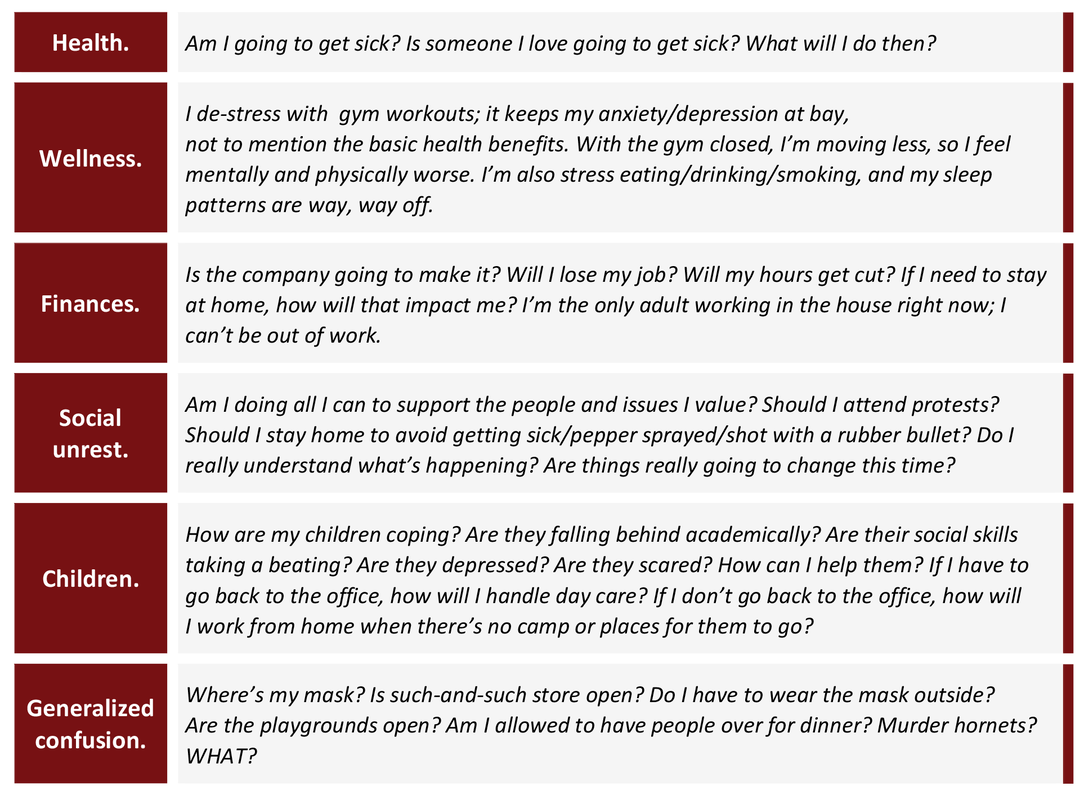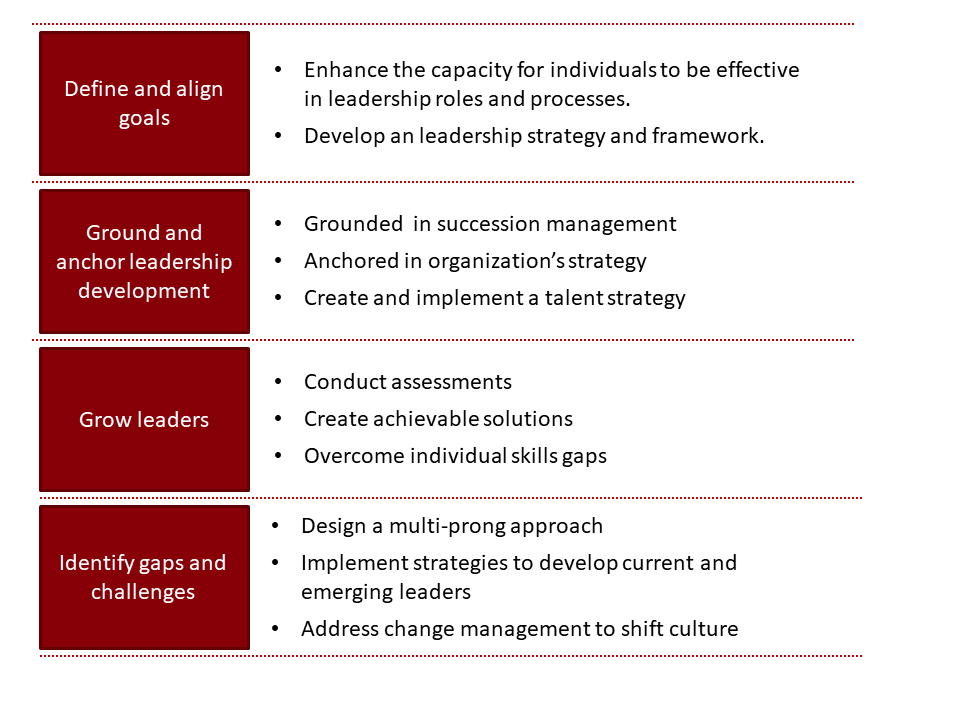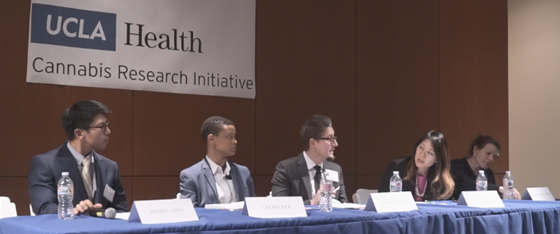|
When the office opened up after lock down, Sam, one of your high-performing workers, said he wanted to work in the office instead of at home. At first, that was fine. But over the past two weeks, he’s been arriving consistently late, which has resulted in delayed handoffs to internal team members. You were aware of one occasion, which you let go – everyone is late sometimes, especially during a pandemic.  It’s Monday morning. Your son didn’t want to eat the breakfast you made him (a hot one, too), and your teenage daughter isn’t speaking to you because you took her phone away. You also haven’t had your coffee yet, it’s raining, and you have a ton to do today. You wanted to arrive early to get a jump-start on the week, but all your extra time was eaten up by car trouble and traffic. You are frazzled. As you’re taking off your coat, two employees walk into your office, clearly annoyed. They inform you that Sam is late. They tell you this has happened several times lately and they can’t do their work until he hands off his files. They are, therefore, wasting time, which will mean they might have to work late. They note that this has been a pattern and they are sick of it; they feel like they’re working hard and doing their part and he’s slacking off. They want you to do something. What happens next? Well, that depends an awful lot on your emotional intelligence (EQ) — a concept you’ve definitely heard of, probably recognize, might not be able to articulate, but absolutely know it when you experience the lack of it. Let’s analyze two possible outcomes to our situation. First, The Reaction. The Reaction You snap at your employees for not giving you one second to get settled in, tell them you will deal with Sam when he arrives, and insist that they just chill out. You text Sam and tell him to see you as soon as he arrives. When he gets into your office, you unload on him for being late, explain how that impacts his peers, inform him he’s on probation, and tell him to hand off his work ASAP so as to not put the team even further behind. The Reaction isn’t ideal (but you probably already know what). It’ll no doubt irritate everyone involved and not yield optimal results, but it was easy and probably felt good to you for a nano-second. You’ll spend a lot more time cleaning up the mess you made with your team. Knowing all of that, how many of you can see yourself in The Reaction — not because you would consciously choose that solution but because it just … happens? Be honest. We’ve all done this. What’s a better solution? The Response. The Response You are irritated. You take a deep breath. You then let your team know you understand the urgency and ask them if there are other tasks they can do while they wait for Sam. If not, ask them to be patient. Assure them you will talk with Sam after he hands off the files and will work out a solution to minimize these delays in the future. When you meet with Sam, you ask him why he was late and discuss that this is becoming a pattern. You then find out that Sam’s mother, who takes care of Sam’s son while he works, has the coronavirus so he’s been using a temporary daycare solution. They aren’t always open on time, so he’s been late because of it. When Sam’s finished talking, you consider that your spouse works from home, so your kids are taken care of, but you can absolutely imagine the stress of having a sick parent, trying to arrange daycare, and keeping up your job performance. Sam deserves a break. Together, you agree that he will email the files his teammates need before he leaves at night or, if he’s working at home in the evenings, before he logs off. This will ensure that the team can keep working even if Sam is delayed in the morning. You and Sam agree while he is using this short-term daycare solution, he can push out the start of his work day by a half-hour so he doesn’t need to rush. You tell him you’ll check in with him in a week to see how things are going.  The Response is harder. It’s clearly the compassionate, professional, mature option. It’s more likely to resolve the situation without adding more emotional garbage on top of it. It’s an emotionally intelligent response. Emotional intelligence is both the ability to recognize your emotions and to make decisions about how much of a role in your response they should have. Emotionally intelligent people aren’t any less emotional; they’re just able to control and apply emotions more effectively to a given situation. They are, in essence, more self-aware and thus successful. Bradberry and Greaves write, “… 83 percent of people high in self-awareness are top performers, and just 2 percent of bottom performers are high in self-awareness.”¹ In the above example, the first reaction is irritation. Totally natural to most people. The key to this solution is the first step you take after that reaction: the pause. Taking a moment to calm down, asking yourself why you are so irritated, and recognizing that nothing that happened before you came into the office has to do with your team. It’s really not their problem. The next emotionally intelligent action is recognizing the team’s emotions and helping them set their knee-jerk reactions aside so they can focus on a solution. This is social awareness. “To be socially aware, you have to spot and understand people’s emotions while you’re right in the middle of it.”² You don’t want to fuel the frustration fire in the team as they stand in their office. You want to help them get back to work while feeling heard, in turn trusting that you’ll take care of things. Finally, you show empathy to Sam’s situation, to understand how he must be feeling, and collaborate to come up with a solution that enables him to perform well while giving him flexibility to address his parental and childcare needs. Why does this matter? Well, emotionally intelligent people have the ability to get more out of both themselves and their teams. Because of this, more and more positions, especially those in leadership, require emotional intelligence to perform effectively. In fact, Daniel Goleman says, “Companies today are increasingly looking through the lens of emotional intelligence when hiring, promoting and developing their employees. Years of studies show that the more emotional intelligence someone has, the better their performance.”³ A deep breath can not only change your brain chemistry a bit, but it gives you a second to decide what to do next, instead of words or actions bursting out of you. Much like empathy (which is a huge part of emotional intelligence), EQ is a skill you can develop if you work at it. Here are a few ways to do just that:
Click below to download a version of this list.
Being able to admit you got something wrong shows humility and builds a tremendous amount of trust. Emotional intelligence involves the process of evolving. Some people innately have many of these skills, but for those who don’t, the skills are highly teachable and can be honed if practiced. In short, everyone can increase their emotional intelligence and thus their overall effectiveness and success. *Look for next week's article about providing feedback. References
¹ Bradberry, T. & Greaves, J. (2009). Emotional intelligence 2.0. TalentSmart. Page 26. ² Bradberry, T. & Greaves, J. (2009). Emotional intelligence 2.0. TalentSmart. Page 39. ³ Goleman, S. (2020, June 9). Harvard researcher says the most emotionally intelligent people have these 12 traits. Which do you have?. Retrieved from https://www.cnbc.com/2020/06/09/harvard-psychology-researcher-biggest-traits-of-emotional-intelligence-do-you-have-them.html ⁴ Bradberry, T. & Greaves, J. (2009). Emotional intelligence 2.0. TalentSmart. Page 21.
0 Comments
Here is just a smattering of the issues that may be stressing out your teams right now. For some, it can be all of this at once. For others, it’s this on top of other mental health issues. Therapist Yessenia Guglielmi writes, “The need for mental health care is extraordinary right now ... Everyone seems to be avoiding their negative emotions and subscribing to the toxic positivity narrative in society right now. This can make people feel like failures if they are not being productive, but I want to remind people that it’s an important time to address our emotions.”¹ We are talking about mental health more now than ever, but the stigma associated with asking for help still remains, especially in the workplace where people may fear being viewed as less productive, professional, resilient, capable, adaptable, or valuable. People fear they’ll be seen differently than their counterparts and their performance and opportunities will be measured against this, which can lead to poor performance. As leaders, it’s imperative to work with your company to make the right resources available and to create a culture in which accessing those resources and/or asking for help doesn’t present a barrier or result in unconscious bias.
Empathize. These days, the word “empathy” is thrown around all the time. Showing empathy is an increasingly more critical leadership characteristic. Prudy Gourguechon sums up the value of empathy pretty well, “Without empathy, you can’t build a team or nurture a new generation of leaders. You will not inspire followers or elicit loyalty.”³ To empathize isn’t feeling sorry for someone; it’s having the ability to see someone else’s perspective, to feel along side them, to really see their situation, to share their feelings. Brené Brown’s video below does an amazing job of explaining it. Half the battle is knowing what empathy is. How do you show it? 

Communicate Options and Resources. Many companies have mental health resources and coverage of which employees aren’t even aware. Make sure you’re familiar with all the options so you can communicate them to your team. Contact your company’s Human Resources Department for an accessible list of approved and vetted resources if it isn’t already found on the company’s intranet or internet site. Offer Flexibility. In our last blog, Team Anywhere, we discussed offering some work from home options to some employees. This isn’t simply about letting them choose a long-term commitment to where they work; it’s also about managing stress and different situations that might make it difficult to get to the office. Of course, you are running a business, so it helps to have a communication plan for last-minute, unscheduled remote working days and/or shifted work hours. (You probably already have one for sick days, so leverage that.) As much as possible, you want to foster a work environment and processes that can adapt to your team members’ rapidly changing needs. In the end, that may be what we all need most: to know we are not alone and that we are valued enough to be supported as we work through things. Overall, recognize that you and your team may be struggling in ways they never were before. The more open and supportive you can be, the more you can offer flexibility and creative working solutions, the more likely your team will come to you for assistance with their situation instead of suffering in silence. The first step might just be admitting some of the ways that you’re struggling so they know they’re not alone. In the end, that may be what we all need most: to know we are not alone and that we are valued enough to be supported as we work through things. If you see yourself and your teams reflected in these struggles, now is the time to invest in skills development. Reach out to us. We’ll listen and offer you our expertise. Be sure to check back next week as we continue our series on supporting and developing managers during this transition. References
¹ Guglielmi, Y. (2020, June 10). I’m a therapist and I’m struggling with the COVID-19 pandemic, too. Retrieved from https://www.huffpost.com/entry/therapist-during-coronavirus-pandemic_n_5ed14b03c5b69b83820dfea6 ² Wingard, J. (2020, March 20). Mental health in the workplace: Leading in the COVID-19 context. Retrieved from https://www.forbes.com/sites/jasonwingard/2020/03/20/mental-health-in-the-workplace-leading-in-times-of-crisis/#786ae1956a1b ³ Gourguechon, P. (2017, December 26). Empathy is an essential leadership skill – and there’s nothing soft about it. Retrieved from https://www.forbes.com/sites/prudygourguechon/2017/12/26/empathy-is-an-essential-leadership-skill-and-theres-nothing-soft-about-it/#2b2286762b9d There is some inevitability to what “the office” will look like going forward. For months, many teams have been demonstrating that they can be productive from remote locations, and numerous employees see great value in the flexibility working from home offers. As we discussed in our last blog, Tomorrow Is Not Yesterday, there is no returning to where we were in early March, and a big part of that is embracing remote workers (well, metaphorically; let’s keep that six-foot distancing). Trying to hammer your staff back into the way they worked before may be doomed to failure. As you redefine what your work environment looks like, you need to rethink how you’ll foster teamwork, instill company culture, and assess performance. Is the Future Pants-Optional? Some of us have become very comfortable with a morning commute down the hall and pants-optional business attire. There haven’t been any passive-aggressive notes about dirty mugs in the office sink in months. And, heck, Zoom has facilitated many meetings remarkably well. It may be tempting to let everyone stay where they are (it’s certainly cost-effective). However, just because your team can do it, doesn’t mean everyone should or even wants to.  First, not everyone is set up for long-term remote working, even if they are making it work now. The configuration of a home “office” (see also: the kitchen table, the couch, a small desk in the corner of the family room) can vary widely, and some might not be conducive to sustained, focused productivity. Interruptions and distractions can be rampant if workers are also trying to home school and care for their children, not to mention having spouses or significant others working at home as well. Furthermore, there’s often a benefit to being able to leave work at the office – and go home. Trying to hammer your staff back into the way they worked before may be doomed to failure Beyond these workspace considerations, think about the value of traditional, in-person interactions. Steve Jobs said, “There’s a temptation in our networked age to think that ideas can be developed by email and iChat. That’s crazy. Creativity comes from spontaneous meetings, from random discussions.” According to a study by Great Business Schools, 84% of people still say they prefer in-person meetings.”¹ Online meetings may not yield the same collaborative results as traditional meetings. Moreover, the day-to-day interactions inherent to working in the same location (e.g., running into each other in the break room or parking lot, small talk before a meeting starts) yields interactions that help develop the relationships that are critical to effective teams. So, do you tell everyone to stay home? No. Will some workers need to stay home for medical reasons? Certainly. Do you make everyone else come back in to the office? Probably not. For many workers, the best solution is not an either-or scenario; it’s both. Therefore, a model which allows workers to spend part of the time in the office and part of the time remotely could best meet your team’s needs. Further proof that a hybrid solution may be most effective is found in a 2016 Gallup poll. Citing that study, Simovic summarized that, people who work remote 60–80% of the time have the highest engagement....”² The best bet may be encouraging those who prefer to work from home to do so several days a week but to also come into the office on a regularly scheduled basis, making it easier for others to set up in-person meetings. Being flexible with when and where people work can greatly contribute to mental health (see our next blog for more on this topic). You want to avoid locking anyone into one option unnecessarily. To connect workers, many companies are embracing instant messaging platforms (here’s looking at you, Slack) to compensate for the organic conversations that used to happen in the office. Continuing to use these platforms can help solve the issue of the people at home missing out on in-office conversations. Companies need to retain that sense of inclusion for both productivity and team-building purposes. Still, with all of this technology, remember there are times when picking up the phone and talking live can save a lot of frustration. While it may be really, really easy to fire off an email and leave it in someone else’s inbox, it can be better to just walk down the hall or pick up the phone and have that live conversation. Again, the best solutions might be blended: embracing impromptu chats in the halls and chats on instant messaging platforms, phone calls and emails, and traditional meetings and video calls. Preserving and Instilling Your CultureEvery company and every office have a culture. Understanding and fitting into that culture can be a huge part of employee success. That’s hard to do remotely. Consider having new hires (who are able to) start out in the office for a few months so they can more easily grasp how teams interact, how work gets done, and to appreciate the subtleties that are hard to convey over email or solely through online meetings. Give new folks a chance to absorb these things; they’ll feel more a part of the team moving forward if you do. For those who cannot come into the office, go the extra mile to convey the company culture as much as possible and be sure to set up video calls with as many colleagues as possible to help foster those relationships. As they move through the onboarding process, keep checking in to ensure they have the tools and resources they need and are building the connections that will help them be successful. You may need to work a little harder to help them feel fully engaged, but it will pay off in loyalty and productivity. Managing Team AnywhereIt may feel easier and more comfortable to manage people you can see, but most managers are having a crash course in how to manage from afar. As Jeanne Meister states, “Face time will no longer be the measure of worker productivity. Instead, we will finally focus on results!”³ It sounds awesome and what many employees have clamored for in the past, but it isn’t easy. People managers need to learn new ways to interact with employees, demonstrate trust, and assess performance. That means finding new ways to bridge the gap and create consistency among those in the office and those out of the office.  First, ensure that all of your team members are experiencing similar check-ins with you, whether they are working in the office or not. So, if you have weekly 1:1s with the employees who are back in the office, make sure to use video conferencing (yes, we are back to this again) for weekly 1:1s with your remote people. Video helps both of you communicate more effectively since being able to read body language and facial expressions is key to fully understanding what is being conveyed. It also keeps both parties more fully engaged. (How many of us check our phones during conference calls without video? Be honest.) We’ve come a long way in getting even the most reluctant to turn on their cameras, and continuing that practice will increase engagement and aid in communication as we move forward. Resist the urge to micro-manage the folks you cannot see. You may have already become quite good at this over the past few months, but as we move into blended work solutions, you may be tempted to start checking in too much with team members whom you can’t physically see working. While you want them to feel connected, you also want them to feel trusted. If you would normally stop by their desks every morning, check in with them on Slack or email. If you then leave them to their work all day, show the same trust when you can’t see them. Look at the quantity and quality of work. You more than likely have individual goals for each employee and an idea of what they should be completing on a day-to-day basis. Focus your assessments on those metrics. If a job requires a person to be available during certain hours, that person should be held to that standard when remote. If the job doesn’t specifically require that, you may want to establish core office hours (wherever that office is) and communicate those so coworkers know when they can count on that person being available. When shifts are necessary, work to communicate those needs to the team. We’ll say it over and over again: you want to be flexible without compromising productivity and effectiveness. Solid communication streams can go a long way to making various ways of working effective for the individual, the team, and the company. The workplace has changed and will keep changing. Quickly. Leaders need to be able to nimbly respond to their teams’ diverse needs to keep morale and productivity high. Balancing what we’ve learned about remote working over the past few months with what we already know about traditional in-office dynamics can result in policies, processes, and training that bring out the best in every team member. If you see yourself and your teams reflected in these struggles, now is the time to invest in skills development. Reach out to us. We’ll listen and offer you our expertise. Be sure to check back next week as we continue our series on supporting managers during this transition. ¹ SpeedNetworking (2018, June 18). Steve Jobs on the importance of face-to-face meetings (even in the age of iPhones). Retrieved from https://medium.com/@shannonkelly_80469/steve-jobs-on-the-importance-of-face-to-face-meetings-even-in-the-age-of-iphones-a5a4b83621a6#:~:text=Steve%20Jobs%20on%20the%20Importance%20of%20Face%2Dto%2DFace%20Meetings,in%20the%20Age%20of%20iPhones)&text=According%20to%20a%20study%20by,really%20get%20the%20ideas%20flowing.
² Simovic, D. (2019, October 28). The ultimate list of remote work statistics – 2020 edition. Smallbizgenius. Retrieved from https://www.smallbizgenius.net/by-the-numbers/remote-work-statistics/ ³ Meister, J. (2020, March 31). The impact of coronavirus on HR and the new normal of work. Forbes. Retrieved from https://www.forbes.com/sites/jeannemeister/2020/03/31/the-impact-of-the-coronavirus-on-hr-and-the-new-normal-of-work/#4617da102b60 Meeting the needs of a workforce in the office, at home, on the road, and everywhere in between.  “When is your team going back?” You may have been asked this recently as states start to reopen. You may start to tell people when they’ll be returning to the office but, in truth, the answer is they aren’t going back — they’re going somewhere new. There is an unexpected and little-trodden path that’s redefining how, when, and where we work. Successful leaders are those who are embracing this opportunity. They are helping to shape and transparently communicate changes to company strategies, polices, and procedures. They are leaders who can adapt to and support a workforce that is both in the office and at home. Finally, they will recognize the turbulence and stress in many people’s lives, showing compassion for and offering resources to workers who need them. That’s a lot. And it may not be easy. Or comfortable. But we’re here to help you. Over the next two months, Solutions Arts will publish a series of articles aimed at doing just that. Our initial article focuses on providing teams with clear updates to policies and processes and the importance of ensuring written communication is clear, accurate, and concise. Yes, we know this is the dry toast of breakfast, but we also know that not getting these basics right can undermine everything else you will be trying to do. Create a Plan. Communicate the Plan. Be Ready To Revise the Plan. Before anyone sets foot back in the workplace, management needs a plan for what that looks like. In their report Workforce Strategies for Post-COVID Recovery, Deloitte notes, “Leaders should provide teams, managers, and workers with clear direction on changes in work priorities and in routines, including new technologies and digital ways of working.”[1] Some of these considerations are (hopefully) short-term logistical decisions that help stop the spread of the virus (e.g., disinfectant stations, signage encouraging social distancing and hand washing, rotating schedules). There are also longer-term decisions that need to be made with thoughtfulness and fairness. Not everyone wants (or needs) to return to the office. How will you decide who works from home and when? How will workspaces be reconfigured? Who really needs an office now? Consult your team; ask them to honestly assess where they are more productive and mentally healthy. This can be done via anonymous surveys as well as small group and 1:1 discussions. Then balance these findings with the needs of the business to optimize results.
Speaking of Communication Skills… Given the number of people working remotely has increased, it follows that written communication has also increased. But just because we are doing more of it, doesn’t mean we are doing it better or even effectively. Consider this exercise. Participants are shown a text exchange which says: “How are you?” “I’m fine.” Then they are asked, “Is the person fine?” The result will be a dissection of the response. How long did the response take? Is there a period or exclamation point? Is the response in all caps? Is the response from someone the sender is dating, because if so, that person is NOT FINE. In the end, they conclude that the issue with written communication is that tone can be nearly impossible to infer and thus easy to misconstrue. Most of us have had at least one instance where we spent entirely too much time wondering, “What did they mean by that?” Managers, in particular, can unintentionally cause distress simply with a terse email, sending less confident employees into a stress spiral. Learning how to convey your tone in an email or text can save time and protect moral. You want your team focused on doing good work, not spending time trying to figure out what an email may or may not mean. And it’s not just about minimizing confusion, chaos, or, let’s face it, drama. In 2017, Josh Bernoff noted that poor writing is "costing American businesses nearly $400 billion per year."[2] Billion. With a “B.” There are hard costs to miscommunication: wasted time clarifying things (check your inbox for, “I’m sorry; this isn’t quite clear to me. Can you reiterate….?” “Sorry; I’m going too fast/haven’t had my coffee.”), the cost of redoing work due to confusing or inaccurate instructions, the time it takes to smooth over misunderstandings, and so on. Offering employees resources and/or courses on how to make their writing more effective can save you money and headaches.
Our next article will focus on managing employees who are working in the office and remotely, exploring how to keep both engaged, motivated, and feeling “seen.” This first installment focuses on the changing dynamic in offices across the globe where workers are more likely than ever to split time between working in the office and working remotely.
[1] Deloitte. (2020). Workforce strategies for post-COVID recovery. Retrieved from https://www2.deloitte.com/global/en/pages/about-deloitte/articles/covid-19/covid-19-workforce-strategies-for-post-covid-recovery.html [2] Bernoff, J. (2017, April 13). Bad writing cost businesses billions. Daily Beast. Retrieved from https://www.thedailybeast.com/bad-writing-costs-businesses-billions Reverse mentoring, the practice of pairing senior executives (mentees) with younger employees (mentors) to develop older, senior executives’ technology and digital acumen, is gaining steam. Companies such as the BBC, Microsoft, UnitedHealth, and Target are among those creating and implementing reverse mentoring programs for their employees. General Electric was one of the first to launch a program in 1999 to tap young employees to teach older executives how to use the Internet.[1] The programmatic goal for these companies is to harness millennials’ and Gen Z’s digital skills and knowledge to educate and develop Baby Boomers and Gen X employees’ technology and social media skills.[2] Microsoft Austria launched their reverse mentoring program in 2014. Michael Jacobs, General Manager, was paired with mentor, Magnus Svorstøl Lie, Partner Sales Executive through the Microsoft Academy of College Hires (MACH) program. Michael gained first-hand knowledge of topics ranging from new digital communication tools to workplace trends. Magnus didn’t walk away empty-handed. Through his time with Michael, he had a front-row seat to view leadership at work and the larger business picture. Traditional mentoring normally involves a seasoned exec showing the ropes to a younger and often less experienced colleague. Here it’s the complete opposite: digital natives, new to the world of work, with completely different social behaviors and backgrounds are coaching senior leaders on what the workplace should look like, what drives younger talent, and how to move forward,” explains Michael Jacobs, General Manager, Microsoft Norway.[3] The biggest challenge between generations X and Y, is that X needs to manage Y, and Y needs to adapt to X. And reverse mentoring does exactly that, it’s a bridge-builder between our generations.” Magnus Svorstøl Lie, Partner Sales Executive & MACH.[4] Microsoft witnessed the results from this program: it creates a two-way street to share valuable information and skills that drive and positively impact business while growing new leaders. Is It Reverse Mentoring or Something Else? At its core, the goals and concepts of reverse mentoring are a genius approach, but is it really mentoring? Rene Petrin argues that it is not, and we’re inclined to agree. BusinessDictionary.com defines mentoring as an “Employee training system under which a senior or more experienced individual (the mentor) is assigned to act as an advisor, counselor, or guide to a junior or trainee. The mentor is responsible for providing support to, and feedback on, the individual in his or her charge.”[5] Petrin views reverse mentoring as coaching rather than true mentoring. “For a younger person to truly mentor an older person, that younger one has to have sufficient maturity to relate to the older worker in such a way that will create the mentoring relationship. I find this highly unlikely in most cases, particularly if the mentors are younger workers.”[6] Coaching, as defined by Petrin, “doesn’t require an intimate, trusting relationship. Coaching requires the expert, who is the coach, to be able to convey his or her expertise to the coachee. The coach’s style of coaching may impact how successful s/he is as a coach, but the expertise can be passed on to the mentoree regardless.”[7] Neither the commonly held definition of reverse mentoring or Petrin’s coaching definition hit the mark. Inherent in mentoring and coaching is a relationship based on trust. This is the foundation for change to occur. Without it, unearthing internal obstacles that may prevent behavior change is impossible. Reciprocal Learning Instead, what seems to be happening between many of the dyads, or relationships, is what we refer to as reciprocal learning. The relationship goes beyond traditional mentoring by paving the way for an exchange of learning where a wealth of existing experience is present on both sides. It serves as a two-way street. If the program is developed and implemented with that goal in mind, it can go beyond technology and social media training and education to include operations, customer preferences, and diversity. Reciprocal learning expands the current notion of reverse mentoring and opens the door for companies to leverage more than technology and social media training. Consider this: women comprise half of the college educated workforce, but represent only 29% of science and engineering jobs.[8] As the Society for Human Resource Management (SHRM) notes, this percentage drops in the leadership ranks in both these fields.[9] In 2017, women comprised only 5% of CEOs in S&P 500 companies while men still significantly outnumbered women in the boardroom.[10] There’s room for improvement, and reciprocal learning serves as one tool among many to promote gender-inclusive leadership development. Success Factors If creating and implementing a reciprocal learning program sounds like a win for your organization, consider these success factors outlined by SHRM to help you begin to draft your program foundation:[11]
Keep the Conversation Going Stay tuned for our next blog where we delve deeper into reciprocal learning benefits, guidelines, and success measures. References [1] Reverse Mentoring: Novel Necessity or Condescending Craze? | Regus. (2018, January 05). Retrieved January 18, 2018, from https://www.regus.com/work-us/reverse-mentoring-novel-necessity-condescending-craze/?utm_campaign=Engagement_Newsletter_1801_IE&utm_medium=email&utm_source=Eloqua
[2] For the purposes of this article, we are categorizing millennials, or Generation Y, as those people born 1977 to 1995. Generation Z, also referred to as iGen or Centennials, represent people born 1996 and later. They are beginning to enter the workforce, and like millennials, grew up with unprecedented exposure and access to technology and social media. Generation X were born between 1965 and 1976, while Baby Boomers were born between 1946 and 1964. [3] Reverse mentoring: How millennials are becoming the new mentors. (n.d.). Retrieved January 19, 2018, from https://news.microsoft.com/europe/features/reverse-mentoring-how-millennials-are-becoming-the-new-mentors/ [4] Reverse mentoring: How millennials are becoming the new mentors. [5] Mentoring. BusinessDictionary.com. Retrieved January 15, 2018, from BusinessDictionary.com website: http://www.businessdictionary.com/definition/mentoring.html [6] Petrin, R. (n.d.). Business Mentoring Matters: Why Reverse "Mentoring" is Not Mentoring. Retrieved January 18, 2018, from http://www.management-mentors.com/about/corporate-mentoring-matters-blog/bid/97925/Why-Reverse-Mentoring-is-Not-Mentoring [7] Petrin, 2018. [8] Statistics. (n.d.). Retrieved January 19, 2018, from https://ngcproject.org/statistics [9] Gubbi, P., Hubbard, S., & Smith, R. (2017, February 16). How to Create a Successful Reverse Mentoring Program to Promote Gender Diversity. Retrieved January 19, 2018, from https://blog.shrm.org/blog/how-to-create-a-successful-reverse-mentoring-program-to-promote-gender-dive [10] Wiener-Bronner, D. (2017, December 18). The ranks of women CEOs got even smaller this year. Retrieved January 19, 2018, from http://money.cnn.com/2017/12/18/news/women-ceos-2017/index.html [11] Gubbi, 2017. Is your organization prepared? Bill Valdez wants to know, Is the Federal Government in the Midst of a Leadership Crisis? Using data from a survey conducted by the Senior Executives Association (SEA) in collaboration with Deloitte, he argues that a government-wide strategy to nurture the next generation of leaders doesn't exist. They are ill-prepared to address what the report refers to as a retirement tsunami. Consider these statistics:[1]
Warning Signs[6] What are the potential warning signs that your organization might be facing a leadership crisis?
Recommendations for Leadership Development Consider the following when creating a leadership development program: Leadership development may seem daunting and overwhelming, especially if an organization finds itself in the same predicament as the federal government. Ignoring the problem, relying on Talent Acquisition to continually feed the pipeline, or succumbing to paralysis is a choice that most organizations cannot afford. Invite partners across the organization to begin the discussion, create a call to action rooted in data, conduct analysis, sketch a framework and strategy, and identify actionable and achievable steps to get the ball rolling. References [1] Valdez, B., Dye, D., & Womack, K. (n.d.). Survey of federal government executives. Retrieved February 01, 2018, from https://seniorexecs.org/989-survey-of-federal-government-executives [2] Bersin, J., Geller, J., Wakefield, N., & Walsh, B. (2016, February 29). Introduction—The new organization. Retrieved January 17, 2018, from https://www2.deloitte.com/insights/us/en/focus/human-capital-trends/2016/human-capital-trends-introduction.html [3] Bersin, Introduction—The new organization. [4] Shahid, S. (2014). Outlook on the global agenda (Rep.). Retrieved January 17, 2018, from World Economic Forum website: http://www3.weforum.org/docs/GAC14/WEF_GAC14_OutlookGlobalAgenda_Report.pdf [5] The state of leadership development (Rep.). (2016). Retrieved January 17, 2018, from Harvard Business Publishing website: https://www.harvardbusiness.org/sites/default/files/19770_CL_StateOfLeadership_Report_July2016.pdf [6] Hairston Blade, V. (2017, September 18). 10 warning signs that your leadership pipeline is at risk. Retrieved January 17, 2018, from https://www.forbes.com/sites/forbescoachescouncil/2017/07/05/10-warning-signs-that-your-leadership-pipeline-is-at-risk/#6e8886a37c73 [7] (n.d.). Retrieved January 17, 2018, from https://www.criticalthinking.org/pages/defining-critical-thinking/766 [8] Kastner, N., & Somogyi, E. (2017, February 22). 5 skills employers are seeking but millennials are lacking (through the eyes of a millennial). Retrieved February 01, 2018, from http://blog.ung.edu/mba/5-skills-employers-are-seeking-but-millennials-are-lacking-through-the-eyes-of-a-millennial/ [9] American Sociological Association. (2009, March 31). Research links diversity with increased sales revenue and profits, more customers[Press release]. Retrieved May 21, 2018, from https://www.eurekalert.org/pub_releases/2009-03/asa-rld033009.php What’s your learning & development initiatives’ Net Promoter Score®[1]?" What Is Net Promoter Score (NPS®)? Fred Reichheld, a partner at Bain & Co consultants, is credited with creating a framework known as the Net Promoter Score, or NPS. Reichheld led Bain’s customer loyalty practice in early 2000, and he developed the concept based on decades of field experience in customer market research, advising senior executives on customer loyalty and growth, and publishing literature on the subject.[2] Initially, NPS was used exclusively as a customer loyalty metric and based on one question, “How likely is it that you would recommend our company/product/service to a friend or colleague?” As Reichheld and his team developed the metric into a robust management model, companies across industries benefitted from gaining not only customer loyalty data, but they also were able to tap into product and service gaps and overall company health. At its core, NPS measures customer experience and predicts business growth. It anchors and details a business’s customer experience management (CEM). When used in conjunction with other metrics collected throughout the customer experience, leadership gains actionable data to improve customer experience performance. Among its greatest benefits, as noted by Net Promoter Network, is ease of use. It’s easily understood by employees across the organization, thereby engaging them in the customer experience. Applicability to Learning and Development In a previous Solutions Arts’ article, Overcoming Evaluation Obstacles, we outlined common barriers associated with Learning and Development (L&D) evaluation and how to overcome them. Among the obstacles we discussed were the limited staff time and required tools to effectively conduct learning transfer evaluation. If we substitute customers for employees, or learners, NPS becomes an effective, simple tool to gauge content value and learning transfer and integration. NPS How-to for L&D NPS is more commonly thought of and used in eLearning courses. Inserting an NPS survey at the end of an eLearning course (or via email following the course) is a great first step for many companies to test-drive the application. However, NPS can be applied effectively in other L&D and business initiatives. The following lists examples where companies have used NPS to analyze outcomes, measure integration and application, and improve iterations of future efforts:
Adam Ramshaw outlines five training evaluation questions to launch an initial NPS survey.[3]
Calculate NPS Let’s use an example from above to illustrate how to calculate an NPS and define the corresponding terminology. We’ll use a typical 0–10 Likert scale to define respondent options. Respondents select their likelihood level and fall into one of three categories:
Promoters respond with a score of 9 or 10 and represent those most likely to recommend the course. Passives are those respondents who score 7 or 8. They’re unenthusiastic about the course, but unlikely to register disapproval. Detractors fall within the 0–6 range and may actively devalue the course. To calculate the NPS, subtract the percentage of Detractors from the percentage of Promoters. For example, if 75% of respondents were Promoters and 10% were Detractors, the NPS would be 65. The NPS can range from a low of -100 (if every learner is a Detractor) to a high of 100 (if every learner is a Promoter). NPS isn’t designed or best applied as the only evaluation tool in L&D’s toolkit. It is one assessment tool that can easily be adopted and adapted in L&D’s evaluation strategy. If the goal is to gradually shift the organization to a data-driven environment to inform leadership, business goals, and initiatives and capture learner feedback, NPS offers opportunities to collect and analyze data in a simple format across the organization. [1] Net Promoter, Net Promoter System, Net Promoter Score, NPS and the NPS-related emoticons are registered trademarks of Bain & Company, Inc., Fred Reichheld and Satmetrix Systems, Inc.
[2] NPS History. (n.d.). Retrieved December 01, 2017, from https://www.wootric.com/net-promoter-score/nps-history/ [3] Ramshaw, A. (2017, September 27). The 5 Training Survey Questions You Must Include. Retrieved February 02, 2018, from https://www.genroe.com/blog/training-survey-questions/11413 Solutions Arts attended UCLA's Cannabis Research Initiative's, "The Future of Cannabis in LA" event on February 22nd. The event--held at the UCLA Neuroscience Research Building--hosted a sold out audience of 240 members of the larger Los Angeles community. Panelists presented and discussed topics such as the effects of cannabis legalization on aspects of health, crime, tax revenue, jobs, and traffic accidents in states like Colorado and Washington and anticipating the kinds of effects Los Angeles might see as cannabis legalization rolls out. One of the panels presenting at UCLA Health Cannabis Research Initiative's, "The Future of Cannabis in LA" event held February 22, 2018. UCLA faculty, outside speakers, and panelists included:
Solutions Arts engages with a variety of diverse clients across industries including the commercial cannabis industry. From testing laboratories, distribution, and manufacturing to cultivation and retail, we partner with clients who rely on our learning and development expertise that comes from decades of working with clients in highly regulated environments. Our clients realize that highly skilled and trained staff result in owning market share and retaining valued employees.
Click the link to learn more about UCLA's Cannabis Research Initiative. Dan Cable’s article, Why People Lose Motivation – and What Managers Can Do to Help, gets to the heart of motivation in the workplace and reflects what we know to be true: people are hard-wired to seek learning opportunities and purpose, and embrace challenging, meaningful tasks. When employees encounter consistent roadblocks to satisfy these needs, they become less motivated and engaged.
An organizational shift such as this might seem overwhelming, but as Cable notes, there are three things leaders and managers can do with minimal effort to activate employees’ seeking systems and reap the benefits: Despite these difficulties, it is possible for leaders to activate their employees’ seeking systems without a large overhaul to organization-wide policies and culture. And, in my experience working with leaders across the globe, you can reach business objectives while improving the lives of employees. There are three small but consequential nudges that trigger employees’ seeking systems: encourage them to play to their strengths, creating opportunities to experiment, and helping them personalize the purpose of the work. In our work with clients, we’ve seen the same thing. Employees who are encouraged to apply their skills and find purpose in their work are more motivated and engaged. And, the result often leads to more innovation in the workplace.
Check out Cable’s full article at the link above and feel free to share your thoughts here or on our Solutions Arts Facebook page. Solutions Arts will be attending EIGHTeeN to Life's event this coming Sunday, March 18, 2018 in Hollywood, CA where we'll be meeting with cannabis business leaders to talk about how learning and development supports business success across the industry.
We'll see you there! About the Event A networking opportunity for leaders in the cannabis industry hand-picked for the ultimate collision of common interest with uncommon people. EIGHTeeN to Life is a monthly professional networking opportunity for leaders in the cannabis industry. The events are on the 18th of each month, celebrating the year 2018 when cannabis legalization became a reality in California. |
Archives
August 2020
BlogOur clients and the training community ask us questions and often consistent themes emerge. From making learning stick to developing skills we once assumed every employee possessed, the challenges today’s businesses face can be transformed through a strong learning culture.
Every year, the learning and development industry presents exciting developments, time-saving innovations, and new research. Solutions Arts follows and tests theories, practices, and technologies, and our clients benefit from what we learn. We value sharing what we learn and the opportunity to discuss it here on our blog.
Categories |
||||||||||||||||










 RSS Feed
RSS Feed